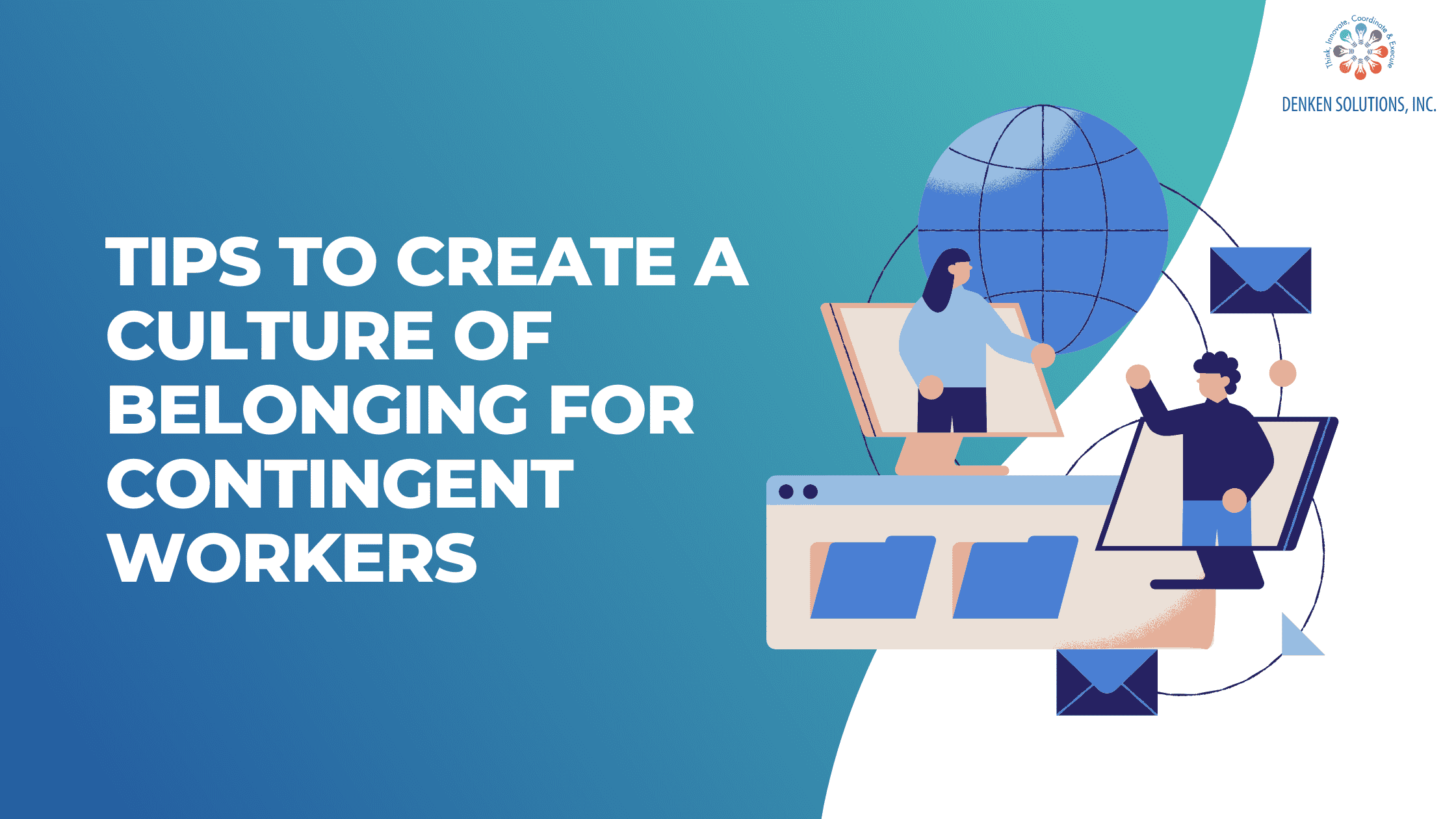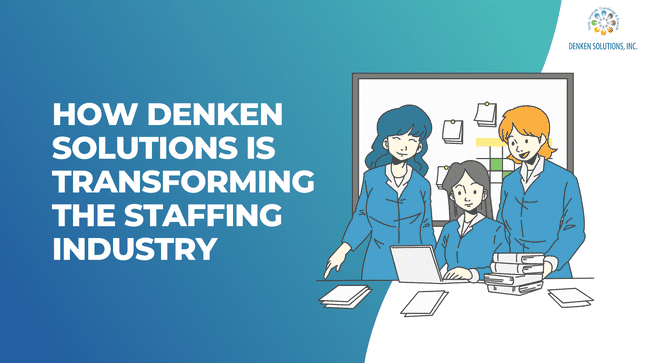As the digital workforce evolves, the line between full-time employees and contingent workers is clearly becoming increasingly blurred. From freelance designers and contract developers to project-based consultants and temporary staffing solutions, contingent talent is now playing a vital role in driving business outcomes across industries.
However, although these professionals tend to contribute just as much as their full-time counterparts, they are frequently left on the margins of workplace culture, which is excluded from meetings, overlooked in celebrations, or even denied access to basic team communication tools. Additionally, the lack of inclusion could impact engagement, productivity, and retention.
In this blog, we have discussed the importance of inclusion for contingent workers, the difficulties businesses encounter, and workable tactics to create a work environment where all employees, regardless of contract type, feel appreciated, connected, and equipped to thrive.
Understanding the growing role of contingent talent in the current workforce:
The structure of the modern workforce is currently undergoing a huge transformation. Contingent talent was once viewed as a supplementary resource; however, they have now become a strategic asset for multiple organizations. This includes freelancers, contractors, consultants, and temporary staff. Today, businesses across industries are increasingly relying on the flexible workforce to stay agile, scale faster, and fill gaps without any long-term commitments.
Various factors are causing this shift. The increase in remote work and digital collaboration tools has made it quite easy to work with talent present anywhere in the world. At the same time, uncertainty in the economy and the fluctuating demand have pushed many companies to seek flexible staffing models. Contingent workers offer a solution in this scenario. They bring specific expertise without any overhead costs of permanent hiring, therefore allowing businesses to adapt to changing priorities.
From healthcare and tech to marketing and logistics, contingent professionals are also involved in high-impact projects that were once reserved for full-time employees in the company. This shift is not just about saving costs; it is about accessing special talent on demand and staying competitive in the fast-moving market.
As the contingent staffing model is becoming prevalent, companies have started moving beyond viewing contingent workers as temporary fixes. Instead, they should be recognized as integral contributors, and companies should prioritize workplace inclusion for contingent workers, ensuring they feel included, supported, and valued within the broader workforce.
Engagement strategies for fostering belonging among contingent workers:
Although contingent workers are not on the permanent payroll, their contributions play a significant role in the growth of the company. As an increasing number of organizations are relying on freelance, contract, and project-based talent to drive key skills, fostering a sense of belonging among the professionals is no longer something that is nice to have; it is a necessity.
Creating an inclusive environment where the contingent workers feel connected and valued could lead to higher engagement, better collaboration, and improved quality of work. The following ways can be used to foster contingent workers in a company:
1. Defining objectives clearly for contingent workers:
The cornerstone of efficiently managing a temporary workforce is establishing clear objectives and expectations. Since contingent workers frequently have short-term contracts, it’s critical to set clear goals right away. Key performance indicators (KPIs), deadlines, deliverables, and job duties are all outlined in this.
2. Create a simplified onboarding procedure:
Effective onboarding facilitates the contingent workers’ rapid integration and early productivity. Contingent workers frequently don’t have as much time as full-time employees to become acquainted with company procedures, policies, and tools. Their performance and experience can be greatly enhanced by a well-organized onboarding strategy.
3. Create efficient channels of communication:
Managing a temporary workforce requires constant and clear communication. Regular communication helps prevent misunderstandings, align expectations, and guarantee seamless collaboration with internal teams, especially for contingent workers who frequently operate remotely or across time zones.
4. Make sure labor laws and regulations are followed:
Many legal and regulatory obligations arise when managing a temporary workforce. To prevent fines, legal action, or harm to their reputation, businesses must make sure that labor laws, tax rules, and contract requirements are followed. Because rules governing contingent labor differ by location, it’s critical to be proactive and aware.
5. Utilize a Vendor Management System (VMS) to provide supervision:
An effective tool for managing contingent labor is a vendor management system (VMS). It assists companies with contract tracking, performance monitoring, cost control, and compliance assurance. By giving HR teams access to workforce data, a VMS enables them to make well-informed decisions and optimize processes.
6. Encourage cooperation and inclusivity among teams:
Maximizing contingent workers’ engagement and productivity requires fostering an inclusive workplace where they feel appreciated and a part of the company. Even though they might not be full-time workers, giving them a feeling of community motivates them to participate successfully and support organizational objectives.
7. Provide frequent feedback and acknowledge the contributions:
For contingent workers to be motivated and in line with company objectives, regular performance reviews and rewards are essential. Implementing a systematic feedback process is crucial to ensuring that contingent workers’ contributions are acknowledged and improvements are addressed, as they might not receive regular appraisals like full-time employees do.
8. Centralize the contingent worker management:
An organized method for managing contingent employees across divisions and locations is offered by a centralized management program. Organizations can improve supervision, uniformity, and efficiency in managing their contingent labor by combining procedures.
9. Consider workforce flexibility and scalability:
Long-term company success depends on anticipating future labor requirements and maintaining flexibility in the management of contingent personnel. Businesses must create plans for increasing or decreasing their contingent labor in response to project specifications, market demands, and corporate objectives.
Read the ultimate guide to contingent workforce management to understand the strategies in detail.
Challenges that prevent contingent workers from feeling included:
Despite the growing presence and contributions, various contingent workers are still feeling disconnected from the company they work for. Unlike full-time employees, they are often forced to face barriers that limit their sense of feeling included, which could range from access to internal systems to participation in team communications and culture.
These gaps could lead to lower engagement, reduced productivity, and even missed opportunities for innovation. Some of the primary challenges faced by contingent workers are:
1. Gaps in risk and compliance management:
Despite having insight into the EOR agreements, businesses often struggle to manage risk and stay in compliance across numerous systems and vendors. A very small percentage of firms express high satisfaction with their compliance management efforts, which is especially true in highly regulated sectors such as financial services and health services.
2. Lack of integrated and proactive management:
For managing contingent worker compliance, organizations often lack a unified strategy that can result in disjointed monitoring and lost opportunities. This problem is evident in industries like manufacturing and high-tech, where it is challenging to match contingent talent with business requirements due to a lack of proactive preparation.
3. Major inconsistency in benefits and HR policy:
Contingent workers are often denied access to full-time employee benefit packages and various extensive HR policies. Additionally, having an impact on employee engagement and morale could affect the efforts to develop a cohesive, inclusive workspace culture, especially in industries like financial services, where more than 60% of employees say this is a top issue.
4. Challenges in operations and engagement:
The productivity and contentment of contingent workers can be adversely affected by common problems like ineffective onboarding/offboarding, a lack of performance control, and unclear professional growth pathways. Many firms find it difficult to successfully integrate contingent workers into their workflows and culture when they lack consistent engagement tactics or performance management processes.
How does Denken Solutions include a workforce that values contributions?
At Denken Solutions, we understand that contingent workers are important in driving innovation, agility, and growth. Our approach to staffing goes beyond just placements. We partner with companies to build inclusive workforce models where contingent professionals are not just onboarded, but integrated. From providing smooth onboarding experiences to supporting the ongoing communication between teams, we help ensure that contract and freelance talent feel valued, empowered, and connected to the company’s mission.
Conclusion:
As organizations continue to embrace the hybrid and flexible workforce models, the line between full-time and contingent workers is constantly becoming increasingly blurred. Still, various companies are falling short in creating an inclusive environment for their contingent talent, which could cause them to miss out on the full potential of their contributions.
Building a culture of belonging is not just about inclusion; it’s about respect, connection, and communication across various levels of the workforce. When contingent professionals feel welcome, supported, and valued, they perform better, collaborate more effectively, and also contribute meaningfully to business outcomes.



